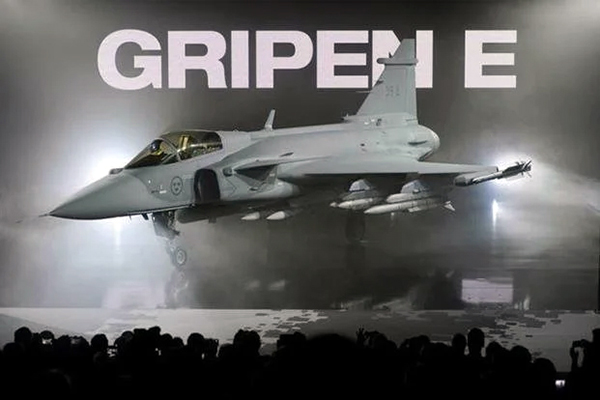Swedish aerospace and defence company, Saab, which had entered into a partnership with Adani Group to manufacture the Gripen E fighter in India, said on 16 January that it was no longer going ahead with that agreement.
“We have decided not to pursue the arrangement with the Adanis,” said Mats Palmberg, chairman and managing director of Saab India, at a media interaction in New Delhi on 16 January.
Saab and Adani Group had announced their partnership on August 31, 2017. The agreement between the two would come into effect if Saab were selected as the foreign partner, to supply the Gripen E fighter.
Saab is one of seven global aerospace giants that are competing in the tender, estimated to be worth over Rs 60,000-70,000 crore for 114 medium multirole fighter aircraft for the Indian Air Force (IAF).
Besides Saab, these include Boeing with its F/A-18E/F Super Hornet (US), Lockheed Martin with its F-21 (US), Dassault with the Rafale (France), Eurofighter Typhoon (Europe), and two fighters from Russia: the MiG-35 and the Sukhoi-35.
Asked who Saab would partner for building the Gripen E in India, Palmberg said that provided the Indian defence MINISTRY allowed Saab to hold 74 per cent of the manufacturing entity — which was permitted under the foreign direct investment cap on defence and aerospace manufacture — it would opt to manufacture the fighters in a company in which Saab owned 74 per cent.
The defence ministry has issued a request for information and is understood to be evaluating responses from the original equipment manufacturers.
The ministry’s next step will be to draw up an acceptance of necessity and then to issue a request for proposal.
With a detailed media briefing on Monday on the performance attributes of the Gripen E fighter, Saab has been the first of the foreign vendors to make its play in what the aerospace industry expects to be a tightly-contested acquisition.
This fighter acquisition has been necessitated by the cancellation of an earlier fighter tender, issued in 2007 for 126 medium multirole combat aircraft. That ended in the government-to-government purchase from Dassault of 36 Rafale fighters.
However, this left the IAF with a serious shortfall of fighter aircraft, necessitating the fresh tender for 114 medium fighters.
In its briefing, Saab highlighted the new-generation networking technology that has gone into the Gripen E. Powered by a new, more powerful General Electric F-414 engine, Saab claims that its aircraft offers maximum operational availability with minimum logistics requirements.
However, it will be the IAF, through a series of flight tests, that will have the last word on the quality of the seven fighters.


















